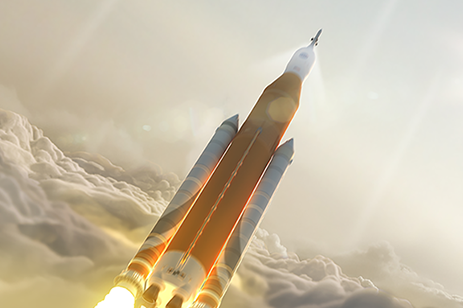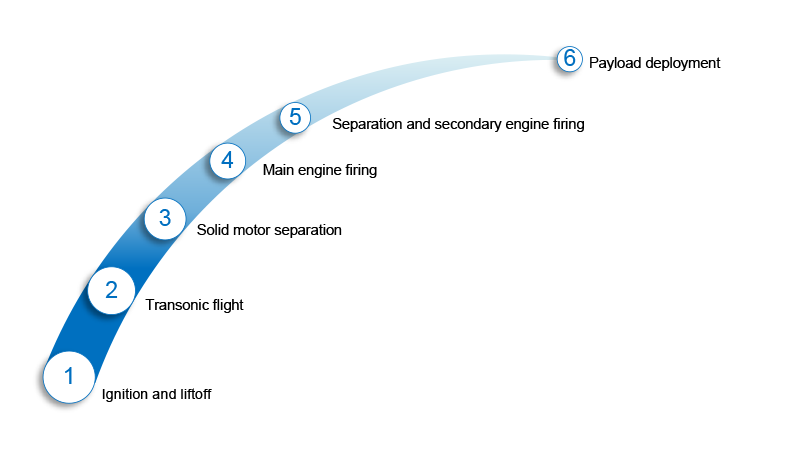
Over recent years, the world of space flight testing has changed dramatically. This is driven firstly by an increase in the number of players in the market with the rise of private and commercially driven space vehicle development companies (e.g. SpaceX, Orbital Sciences, Scaled Composites, RocketLab) and the growth of space programs in other countries such as China, India and Japan. Secondly, these and traditional players such as NASA, ESA and Boeing are seeking to cut costs and speed development by using Commercial-Off-The-Shelf (COTS) equipment which has resulted in these companies selecting and using equipment previously only validated in commercial and military flight testing.

Figure 1: Key points of stress in a typical launcher profile
However, the environment experienced by equipment in space and during launch is very different from that experienced in terrestrial environments. So it is not sufficient to just take a system that has proven performance in, for example, a military jet and expect that it will operate effectively and reliably in a launch vehicle. In addition, there are peculiarities in the vehicles themselves that present special challenges to the suppliers of flight test equipment. These include:
- Non-reusable vehicles require all data to be telemetered from the vehicle. However, the environment during take-off prevents reliable telemetering meaning that data must be retrieved after take-off, but before destruction, during the flight path.
- Radical changes to the instrumentation topology during the mission, as sections of the vehicle detach possibly carrying sub-sections of the flight test instrumentation network with them.
- Large vehicles requiring data to be transferred over 50-100m of cabling at high speeds.
- Instrumentation on orbiting vehicles may be “out of sight” of ground receiving stations for long periods of time, requiring a capability for on-board recording and transmission on demand.
This white paper looks in more detail at the environmental and operational issues for space launch vehicles (although such applies for many other space mission types) and suggests solutions based on existing ruggedized COTS data acquisition systems (DAS).
Log in and download the white paper to learn more about:
- COTS Data Acquisition for Space Applications
- Environmental Ruggedness